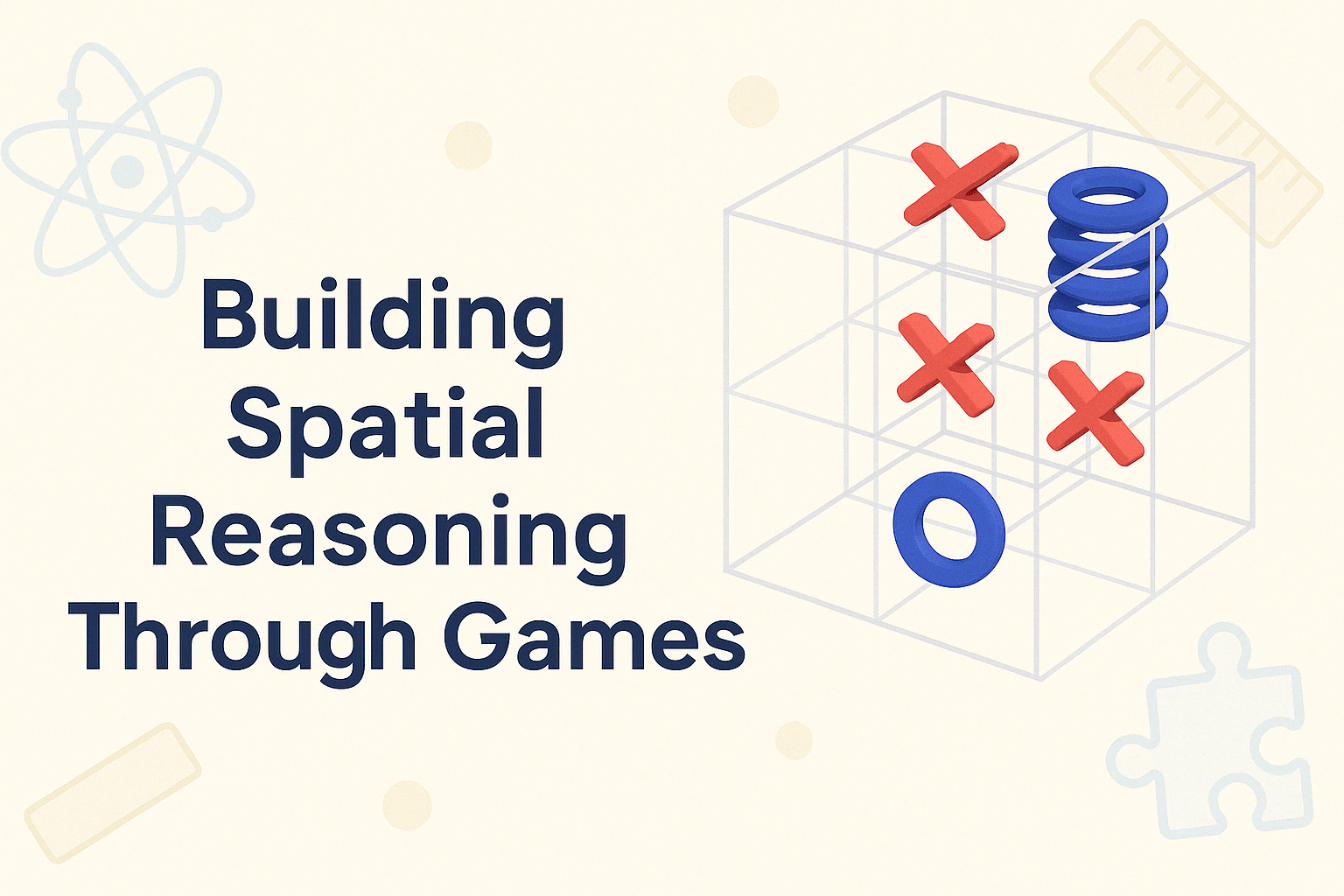Spatial reasoning might sound like a technical term, but it’s actually something we all use every day—from reading maps to packing a suitcase or figuring out how to park a car.
And guess what? Games—especially those that involve thinking in multiple dimensions—are one of the best ways to improve it.
Let’s explore what spatial reasoning is, why it matters, and how a simple game like 3D Tic Tac Toe can help build these powerful skills.
🧭 What Is Spatial Reasoning?
Spatial reasoning is your ability to visualise, understand, and manipulate objects in space. It’s how you:
- Rotate shapes in your mind
- Predict where things fit or move
- Solve puzzles, build structures, and plan routes
It’s a key cognitive skill in areas like:
- Maths & geometry
- Science & engineering
- Architecture, design, and even sports!
And the best part? You can develop it through play.
🎲 Games That Build the Brain
Here’s a fun fact: researchers have found that games and puzzles can meaningfully boost spatial reasoning—especially in children.
According to studies:
- Kids who regularly play board games and logic puzzles score higher on spatial tasks
- Strategy games help improve visualisation, pattern recognition, and multi-step planning
- Learning through games leads to deeper retention compared to passive methods
💡 In short: games make you think—and remember—by doing.
🧠 Why 3D Games Are Especially Effective
Most classic games are played in two dimensions. But when you add a third dimension—like in 3D Tic Tac Toe—the brain has to level up.
Now players must:
- Track positions on multiple stacked layers
- Visualise lines that stretch across the cube
- Rotate and reorient the board in their minds
- Predict future moves in a multi-planar space
This engages parts of the brain that aren’t usually tapped in everyday 2D tasks.
🧒 Perfect for Students (and Grown-Ups Too)
3D strategy games are particularly powerful for learners aged 8–14, when spatial skills are rapidly developing. But adults benefit too!
Here’s what players gain from regular 3D gameplay:
- Improved mental rotation (thinking in 3D space)
- Greater working memory (tracking patterns)
- Stronger logical reasoning
- Better planning and decision-making
All from a game that’s fast, fun, and endlessly replayable.
🧩 Why We Love 3D Tic Tac Toe
Compared to more complex 3D games (like 3D chess or Rubik’s Cubes), 3D Tic Tac Toe is the perfect entry point:
- Simple rules
- Quick matches
- Visually clear gameplay
- Easy for educators to introduce in class
It’s a screen-based game that actually encourages off-screen thinking—something that’s increasingly rare and valuable.
👩🏫 Classroom Ideas for Educators
Want to try this in your classroom?
Here are a few ideas:
- Warm-up exercise: Use it as a short mental warm-up at the start of maths or STEM lessons
- Pair competition: Let students play in teams and talk through their moves aloud
- Lesson link: Connect it to units on geometry, symmetry, or logic
- AI exploration: Pair it with an intro to coding or game design using our blog post on How Hermiobot Thinks
Many teachers use games to support 21st-century skills: critical thinking, collaboration, and creativity. 3D Tic Tac Toe fits perfectly.
🧠 Games That Make You Smarter? Yes Please.
In a world filled with distractions, games like 3D Tic Tac Toe give us something rare: a challenge that’s fun and good for our brains.
So whether you’re a parent looking for screen time with purpose, or a teacher adding strategy to your lesson plans, remember this:
🧩 Play is how we learn best.
👉
